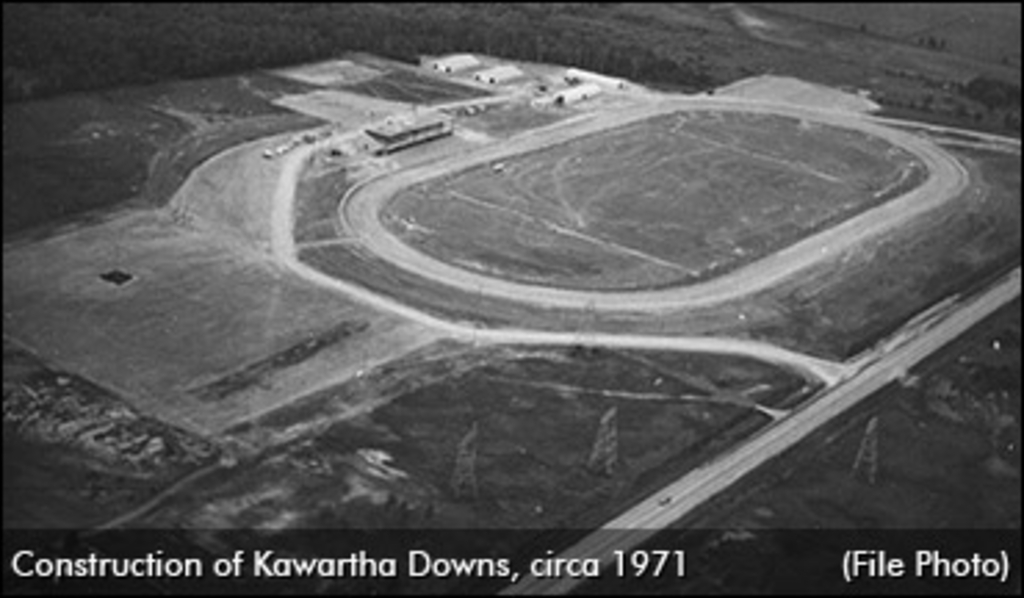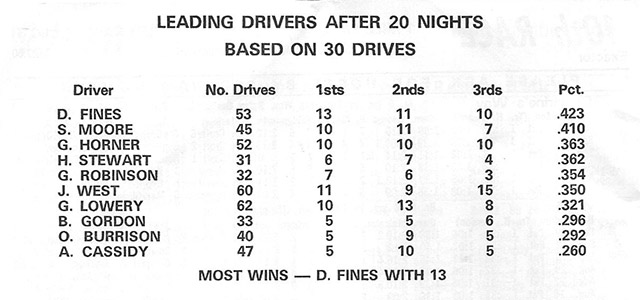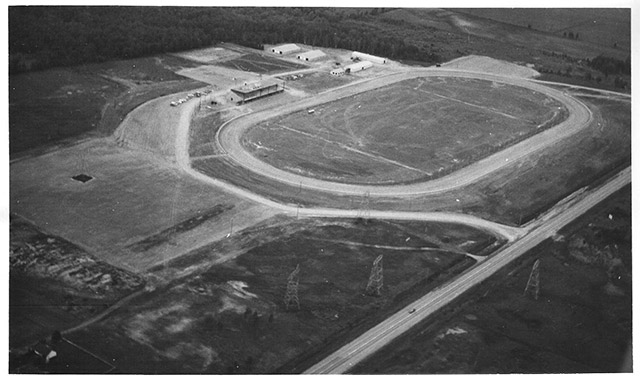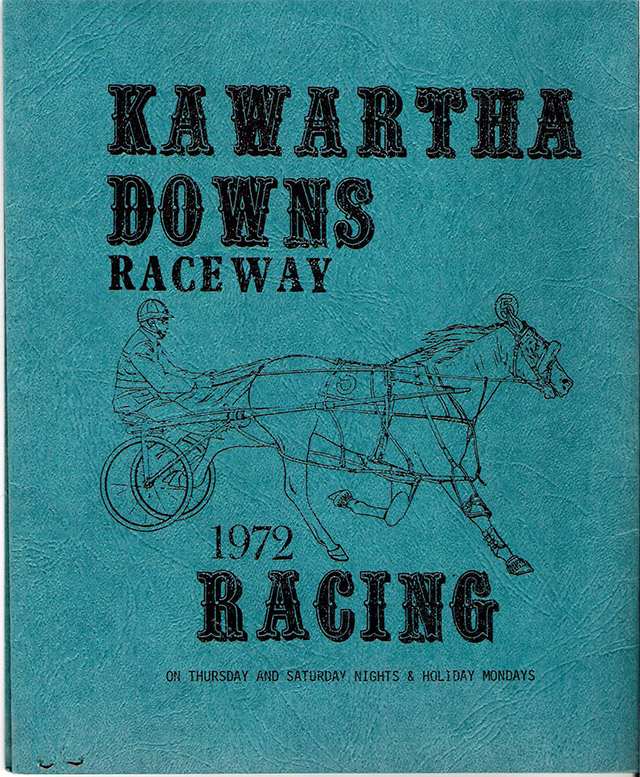
 In this week's edition of Rewind, Robert Smith recalls the start up of Kawartha Downs in 1972 and the role it has played as an important "B" Track for nearly 45 years.
In this week's edition of Rewind, Robert Smith recalls the start up of Kawartha Downs in 1972 and the role it has played as an important "B" Track for nearly 45 years.
(This is the first of a two part story with the second edition appearing in a future Rewind.)
Back in 1971, racing at Peterborough's venerable old Morrow Park came to a close. After decades of harness racing action, the sport had progressed to the point where a change of venue was deemed to be the best policy for everyone concerned. That year the Peterborough Racing Association's lease with the Peterborough Agricultural Society was terminated.
The group's decision to build a new racing plant came about after failing to receive long-term lease assurances in exchange for major capital expenditures to upgrade the aging facility.
For many years, the racing calendar centred mainly around the annual fall fair, held each year in mid-August. On occasion, other meetings were held, sometimes as many as five per year. With the advent of night racing in the early 1960's, Peterborough became the first so called "B" track to stage racing under the arc lights. Thanks to the efforts of a number of local horse-loving individuals such as Orville Fallis who served as President of the Peterborough Driving Club as it was originally known, the sport became extremely popular in the area. Pari-mutuel betting was first introduced in 1960, and the Club witnessed a huge increase in betting from around $4,000 in the early years, increasing to a high of $50,000 by 1970.

A 1970 excerpt from the Morrow Park program shows the leading drivers late in that second to last season. Many familiar names appear.
The last season at Morrow Park was a memorable one, marked by a number of "firsts" and "lasts". One of the 'firsts' was a temporary early season shut down of the track for four weeks. Once the difficulties were ironed out, racing resumed and the remainder of the season saw a marked increase in both wagering and attendance. The horsemen benefited from the economic upsurge which resulted in a general increase in purses including a hike to $700 for the weekly Invitation.
In mid-August, the Peterborough Agricultural Society held their annual race meeting which featured an Invitational Pace with a huge purse of $2,500. The winner of this race was the locally-owned Roannie Lad owned by Roger and Doug Hie of Coburg with Doug in the bike. Their time of 2:06.3 was just three-fifths of a second off the track record as they defeated second place finisher Rob Ron Hal (Clarence "Sugar" Gagnon) with Retta Herrington piloting Barbara D Pride to a third place finish.
In the 'lasts' department were a group of old-timers who had turned 14 that season and were thus entering their retirement years. The final performances of veteran horses like Freddy Pick, Fastry, Postal Chief, Billy Grattan B and Vans Pride C brought about a bittersweet feeling for the many fans who had watched them through the years. Each horse and their owner was presented with a cooler as a lasting memento, and a few even won their final start.
It is interesting to note that the season's fastest recorded mile went virtually unnoticed and was actually viewed by a rather small audience. On the evening of August 21, driver Gerald Lowery qualified Billy Joe a respected "A" Circuit campaigner in 2:06 flat.
The season-long driver's race for the percentage crown went right down to almost the final race of the year on October 23. It was not until Sherman Moore won the 8 th race Invitation with Shars Jade that he could lay claim to the title as he edged out Allan Nicholls. Even then a thin margin of just two percentage points separated the two. With one win on the final night, Guy Larush took the dash winning title as he reined home 18 winners. Up for special mention was starter Tom Curtin referred to as an "unsung hero" as he added to the quality of racing at this final meeting.
Perhaps the last winner at the Morrow Park track was a gentleman named Peter Bonch of Peterborough who was the lucky recipient of a coloured television set won in a draw on the final evening. A coloured TV in those days was a pretty big deal!
Thus ended a memorable era at Morrow Park with the final night's winning drivers in alphabetical order being Morley Brethour, Reg Gassien, Garth Gordon, Guy Larush, Ray Lowery, Sherman Moore, Allan Nicholls, Junior West and Keith West. As an interesting side note and an indication of the times, the total purses for the 10 events on closing night amounted to a whopping $3400!
Memories of the good times were stored away as time marched on and a new era began.
Kawartha Downs Comes Into Being
The site chosen for the new Kawartha Downs complex was located on Highway 28 at Fraserville, Ont., six miles southwest of Peterborough in Cavan Township, Durham County. The 110 acre plot of land was purchased by the Peterborough Racing Assoc. from Lee Reginald Hewitt and the property had been in the family since 1921. At one time it was considered as a possible site for a minimum security prison which was eventually built at Warkworth, Ont.

An aerial view of the new Raceway site as it appeared in 1971, the year before completion
Surveying began in June of 1971 and the start of construction soon followed. The track was to be a five-eighths mile oval making it just the second "B" track of that size in the Province, following the one built at Kingston. With the track designed to be 65 feet wide and suitably banked, it was anticipated that many fast miles would be recorded. Stabling was to consist of two permanent barns each with 44 stalls. Additionally a 50-stall ship in barn was in the plans as well as a paddock to handle three aces. Ample parking for some 150 horse vans was situated nearby.
The grandstand was to be the largest structure of the complex, measuring 200 feet long by 50 feet wide. Constructed of steel framing and pre-cast concrete it would feature three levels and provide seating for 2,000 spectators. Included in the design was a dining room terrace to accommodate 160 persons, a cocktail lounge, snack food concessions and public washrooms. Sitting at the top of the complex was a penthouse to house the announcer, judges, photo finish and television film patrol.
In a rather unique move, financing for the new track which was to become Kawartha Downs came about through the selling of shares to people most of whom were involved with the horse racing business. The complex was built for a reported $ 1 million, or in that range. A total of 137 shareholders were involved at the time of the opening and it was stated that no single shareholder held more than three per cent of the total.

PETERBOROUGH RACING ASSOCIATION:
Pictured above are the executives in office in 1972 the year that Kawartha Downs opened.
Front row (L-R) Jack Heenan, Director; Elwood McDonald, Treasurer; Dr. Harry Hamilton, Director.
Back Row (L-R) Ken West, President; Ray Lowery, Vice President; John Ball, Director; Bud Cotter, Director.
The benefit to the horsemen was not particularly financially rewarding in terms of a rising share price, but it had other benefits. Instead, it provided a good place to race and also the children and families of horsemen often gained seasonal employment at the track. It all sounded like a good idea with ample planning, and that is the way it turned out.
The second edition will chronicle the start up of the new Kawartha Downs and recall some of the many people who were then involved.

A cover shot of the introductory program announcing the opening of the new Raceway in July 1972


My childhood memories of
My childhood memories of Morrow Park and Kawartha Downs are precious as I first attended the races with my grandparents, Fred and Olive Lowery. My grandmother was truly proud of her boys, Ray and Gerald. Whether it was Uncle Ray driving Rosedale Cal or Uncle Gerald driving Billy Joe, my grandmother had a voice and a fist in the grandstand. It didn't matter which son was racing she would bellow out "Drive on Ray (or Gerald)" as they headed into the home stretch with her fists pumping. After they found their new seats at Kawartha Downs this continued. To this day, forty years later I sit in their seats and I enjoyed cheering on my uncles so proudly (until they both gave up driving in recent years). Now my cousin, Russell, continues the Lowery legacy. This well written article has touched my heart and made me realize why I love this sport and my family so much. Like they say....thanks for the memories.
Thanks, Robert and Ray, for
Thanks, Robert and Ray, for this great story and super pics that has brought me many memories of racing at KD in the early days. In the top right corner of the construction pic of the track you'll see a large cedar swamp with lots of standing, stagnant water. when we raced there in the spring and summer the mosquitoes were so thick in the backstretch that you could hardly walk a horse outside without breathing lungs full of them. I had some real wild trips between Woodbridge an KD especially in the winter in a severe snow storm when I remember one time crawling down Hwy 115 with the car and trailer in a foot of snow, no ploughs and you just got in the tire tracks and followed along. Then the night of the big Mavis Road train wreck I was going home and you could see the flames all the way from Port Perry! I got Muskoka Belle's maiden win one night when a fire started in the electrical panel in the paddock and there was a lot of banging and crackling and everybody had to grab a horse and run outside while the guys put the fire out. At that time Muskoka Belle was quite a puller and would go pretty good to the 3/4s and kind of crawl home but that night she was so scared and wound up she forgot to stop and went all the way. In later years Teddy Jacobs drove Downright Darlin to her maiden win for Brian Running and me at KD in 2002. A bit ironic because Muskoka Belle arriving in Teddy Jacobs care was what actually kick started his career!
Can hardly wait for part 2!
Thanks Robert Smith for the
Thanks Robert Smith for the GREAT memories of racing in Peterborough. It was strong again this year as Jim Huck and his staff really worked hard to get new people out and it worked. Hope you can report on racing here for many years! Can't wait for the second report.
Thanks Robert for the story
Thanks Robert for the story on Kawartha Downs.It brings back alot of memories,can't wait for your next story on K.D.And a big thank you to the Lowery's for helping you.Keep up the good work!
I would like to offer a very
I would like to offer a very special thank you to Ray and Fran Lowery ,both so very helpful in supplying some excellent photos and other information that assisted me in presenting this story and the sequel . They are part of the original group of "pioneers" that helped put Kawartha Downs together . I am so pleased to have the chance to "meet" them even though all of our visits have been via email or telephone conversations . Thank you so much !
P.S.- We still have a lot of really good people connected with our sport .